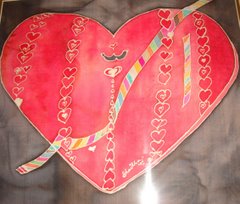
Ft-22
OTHER DEVIATED BELIEFS
FANAA: THE UNION OF MAN AND GOD
This principle is very similar to the ultimate state of being in Buddhism known as Nirvana
This concept also forms the core of a philosophy known as mysticism.
FANAA: THE UNION OF MAN AND GOD
This principle is very similar to the ultimate state of being in Buddhism known as Nirvana
This concept also forms the core of a philosophy known as mysticism.
Mysticism is defined as an experience of union with God and the belief that man’s main goal lies in seeking that union.
A parallel concept can also be found in Hinduism’s identification of Atman (human soul) with Brahman (the impersonal Absolute), the realization of which is the ultimate goal or release from existence and rebirth.
Greek mystic thought blossomed in the Gnostic Christian movements which reached their peak in the second century CE.
Greek mystic thought blossomed in the Gnostic Christian movements which reached their peak in the second century CE.
These trends were combined in the third century with the Platonism by the Egypto-Roman philosopher, Plotinus (205-270 CE), to form a religious philosophy known as Neo-Platonism.
The mystic tradition kept alive in monastic Christianity began to find expression among Muslims from about 8th century CE, a century after the borders of the Islamic state had expanded to include Egypt and Syria and its major centers of monasticism.
A group of Muslims who were not satisfied with what the Sharee’ah (Islamic Law) had to offer, a developed parallel system which they named the Tareeqah (the way)
The ultimate goal of this movement became Fanaa (the dissolution of the ego) and Wusool (the meeting and unification of the human soul with Allah in this life).
All these practices were attributed to the Prophet (saw) through chains of narration in order to validate them, but there does not exist any authentic support for them in any of the classical books of Hadeeth
A multiplicity of systems evolved, and orders, similar to those among Christian monks, appeared named after their founders, like the Qaadiri, Chishti, Nakhshabandi and Teejani orders.
And just as Christian and Hindu monks chose special isolated structures (i.e. monasteries) in which to house their communities, the Sufi orders developed similar housing schemes called Zaawiyahs (lit corners).
SUFI RETREAT – TURKEY
Ad placement: Experience 1 week of Magic and Mystery in the country of famous poet, Rumi. Explore his teachings and philosophy visiting fascinating Sacred Istanbul and taking a pilgrimage through ‘Rumi Country’.
Most Sufi orders claim that Allah could be seen when the state of Wusool (arrival) was achieved.
Yet when ‘Aishah asked the Prophet (saw) if he saw Allah during Mi’raaj (ascension) he replied that he had not.
Prophet Musa was also shown that neither he nor any man could withstand seeing Allah (swt) in this life by Allah revealing some of His Being to a mountain which crumbled to dust during the revelation.
The mundane obligations of Sharee’ah like five daily prayers were no longer obligatory
The mundane obligations of Sharee’ah like five daily prayers were no longer obligatory
Most of them prescribed that prayers to Allah (swt) could be sent through the Prophet (saw) or through the so-called saints; many also began the practice of making Tawaaf, animal sacrifices and other acts of worship around the shrines and tombs of the saints, around the Darghas of countless saints and holy men in India and Pakistan.
The Sharee’ah came to be looked at as the outer path designed for the ignorant masses while the Tareeqah was the inner path of an elite enlightened few
Music was introduced in most circles and drugs like marijuana could be found in others as a means of heightening the pseudo-spiritual experience which they all sought.
The Ritual Dance or Sema
The Mevlevi (also spelled as mawlawi) Ritual dance or sema consists of several stages with different meanings.
During the Sema itself there are four selams or musical movements, each with a distinct rhythm.
At the beginning, during and close of each selam, the semazen testify to God’s existence, unity, majesty and power
The Four Kinds of Selam
The First Selam represents the human being’s birth to truth through feeling and mind. It represents his complete acceptance of his condition as a creature created by God.
The Second Selam expresses the rapture of the human being witnessing the splendor of creation in the face of God’s greatness and omnipotence.
The Third Selem is the rapture of dissolving into love and the sacrifice of the mind to love. It is complete submission, unity and the annihilation of self in the Beloved. This is the state that is known as Nirvana in Buddhism and fana fillah in Islam. The next stage in Islamic belief is the state of servant hood represented by the Prophet, who is called God’s servant foremost and subsequently His ‘Messenger’. The aim of Sema is not uncontrolled ecstasy and loss of consciousness, but the realization of submission to God.
In the Fourth Selam, just as the Prophet ascends to the Spiritual Throne of Allah and then returns to his task on earth, the whirling dervish, after the ascent of his spiritual journey, returns to his task, to his servant hood. He is a servant of God, of His Books, of His Prophets, of His whole Creation


